The Saxony duck is a heavy duck breed, one of the best dual-purpose breeds there is.
Their status is listed as threatened by The Livestock Conservancy, meaning there are less than 1000 known breeding birds in the United States and likely less than 5000 worldwide. In 2013, Germany recorded 1173 Saxony ducks nationwide.
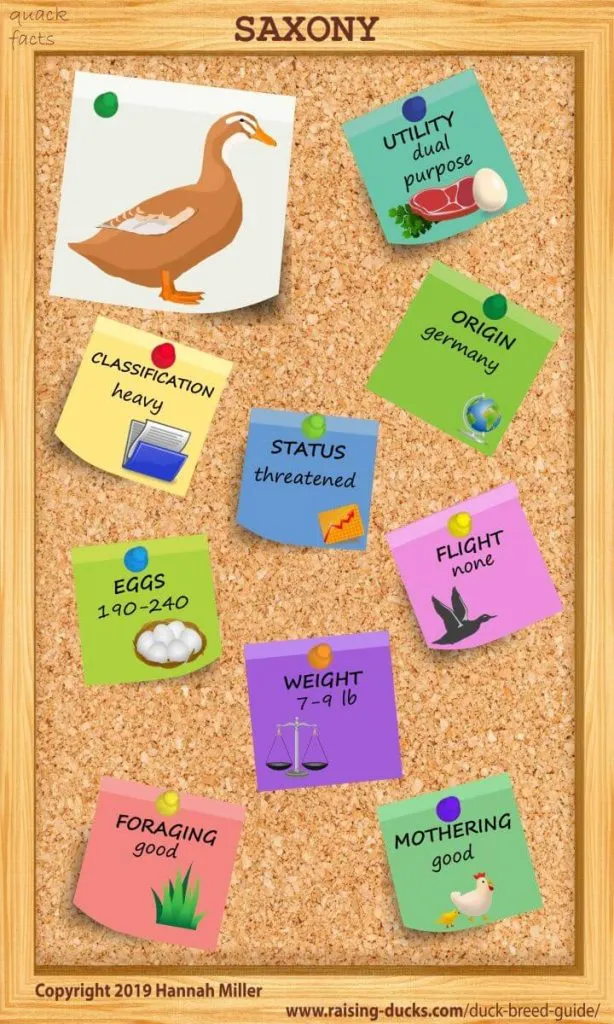
Saxony ducks only come in one color and pattern, and it’s a good one. They are often considered one of the most beautiful duck breeds, and their coloring is almost completely unique. There are some Runner ducks and Call ducks with “Apricot Trout” coloring, identical to the Saxony, but they are rare.
Their color genotype is light phase wild-type mallard with a double blue dilution.
Drakes have a silver or blue-gray head, back, and wing markings. They have a rust-colored chest, cream belly and flanks, and white neck ring.
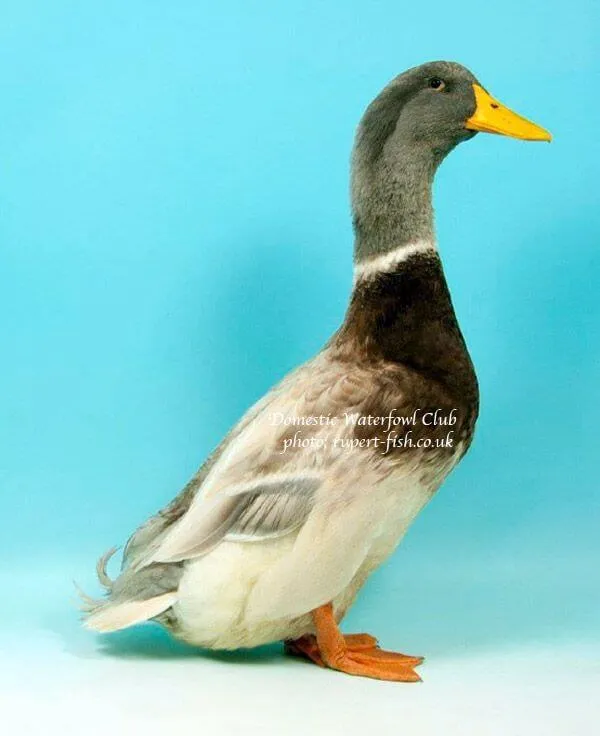
A Saxony drake at a show in 2015. Photo used with permission from The Domestic Waterfowl Club of Great Britain.
Ducks are a beautiful, rich buff or apricot color, with two creamy white stripes on the face and white marks on the chest and wingtips. Both sexes have orange feet and an orange-yellow bill, although males’ bills can have green shading and females’ bills can have brown shading.
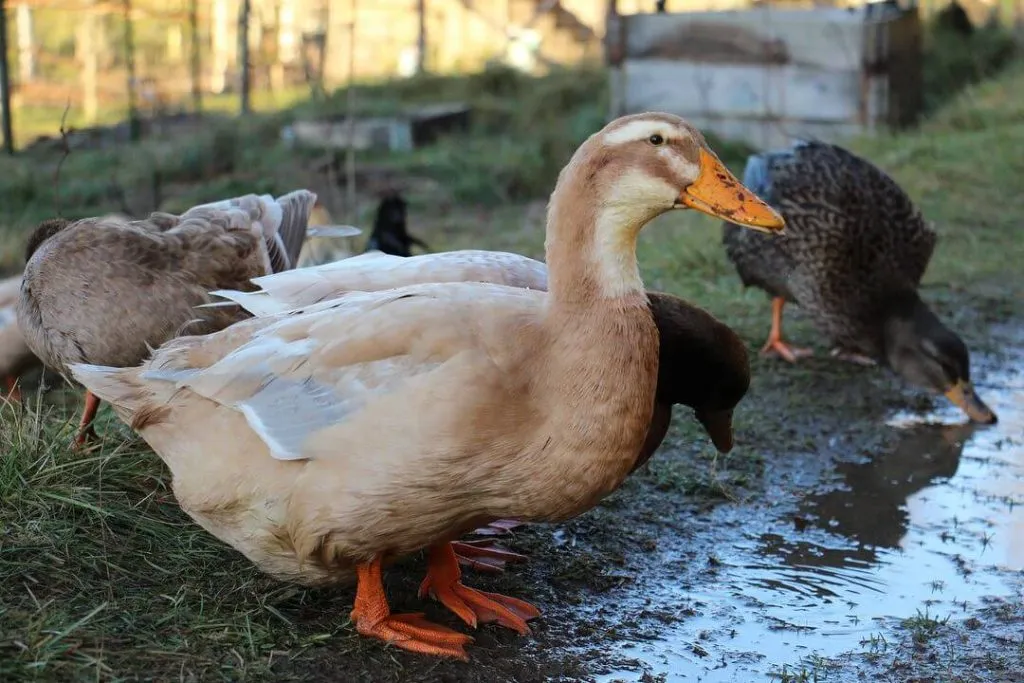
A beautiful Saxony duck. Photo courtesy of “ssbobon” (page no longer exists; not sure of new address).
The Saxony is excellent for both meat and eggs, laying about 100-240 white eggs a year. They weigh 7-9 lb (3-4 kg), so they’re one of the largest duck breeds. They are not particularly fast-growing, but their meat is flavorful and lean.
They don’t fly, are good foragers, and tend to be good broodies and mothers. They also tend to be very calm.
Overall, they’re a wonderful, beautiful breed that really deserves more attention and popularity in the poultry world.
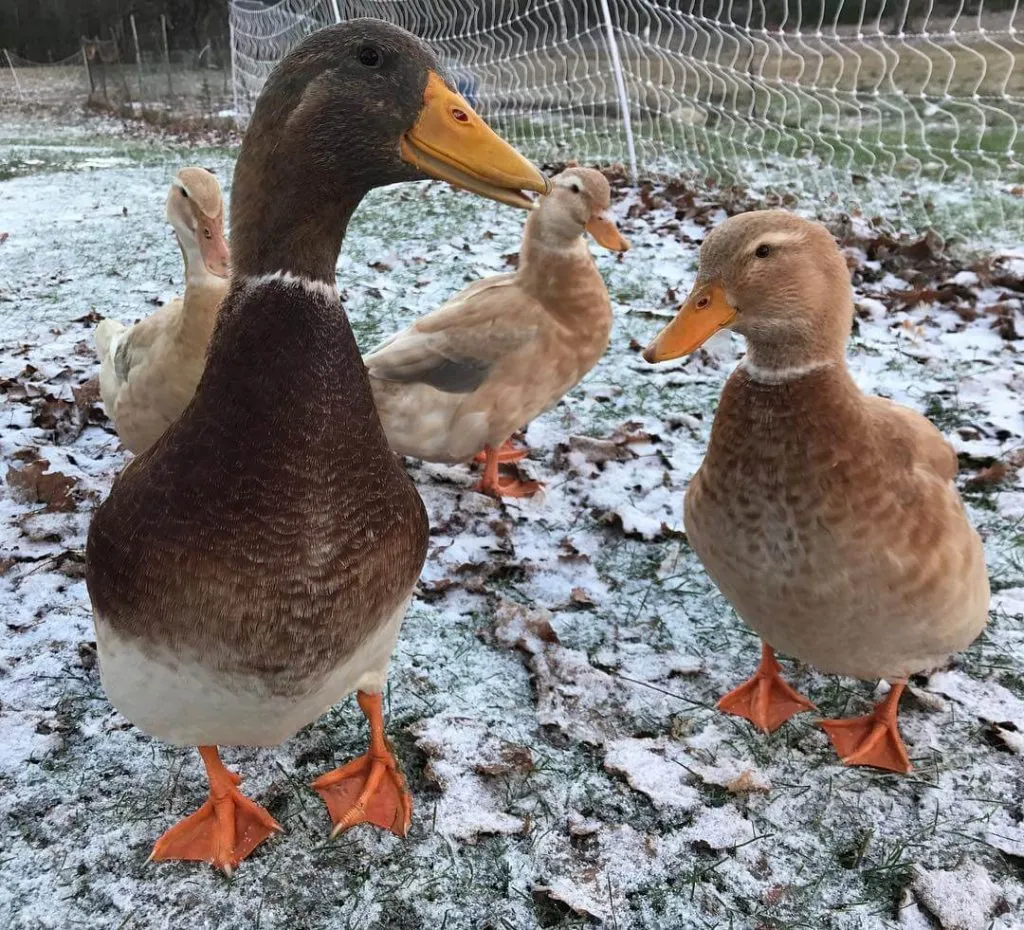
Saxony drake and ducks, who (according to their owner) get all the credit for this picture for being “mega sweeties.” Their names are Blue (the drake), Derpy, Alpha, and Lil’ Cutie.
History
The Saxony duck was developed from Rouens, German Pekins, and Blue Pomeranians in Chemnitz in the German state of Saxony, by a man named Albert Franz. They were first exhibited in 1934.
In World War II, Albert Franz was taken prisoner and nearly all of his ducks were lost, but he was able to continue breeding them in 1952. The Saxony was recognized as a breed in East Germany in 1957, in West Germany in 1958, and in the UK in 1982.
Holderread Waterfowl Farm imported them to the United States in 1984, and they were admitted into the APA’s Standard of Perfection in 2000. They have garnered some popularity, but they remain relatively rare.
PHOTO AND VIDEO GALLERY
A good overview of the Saxony duck breed:
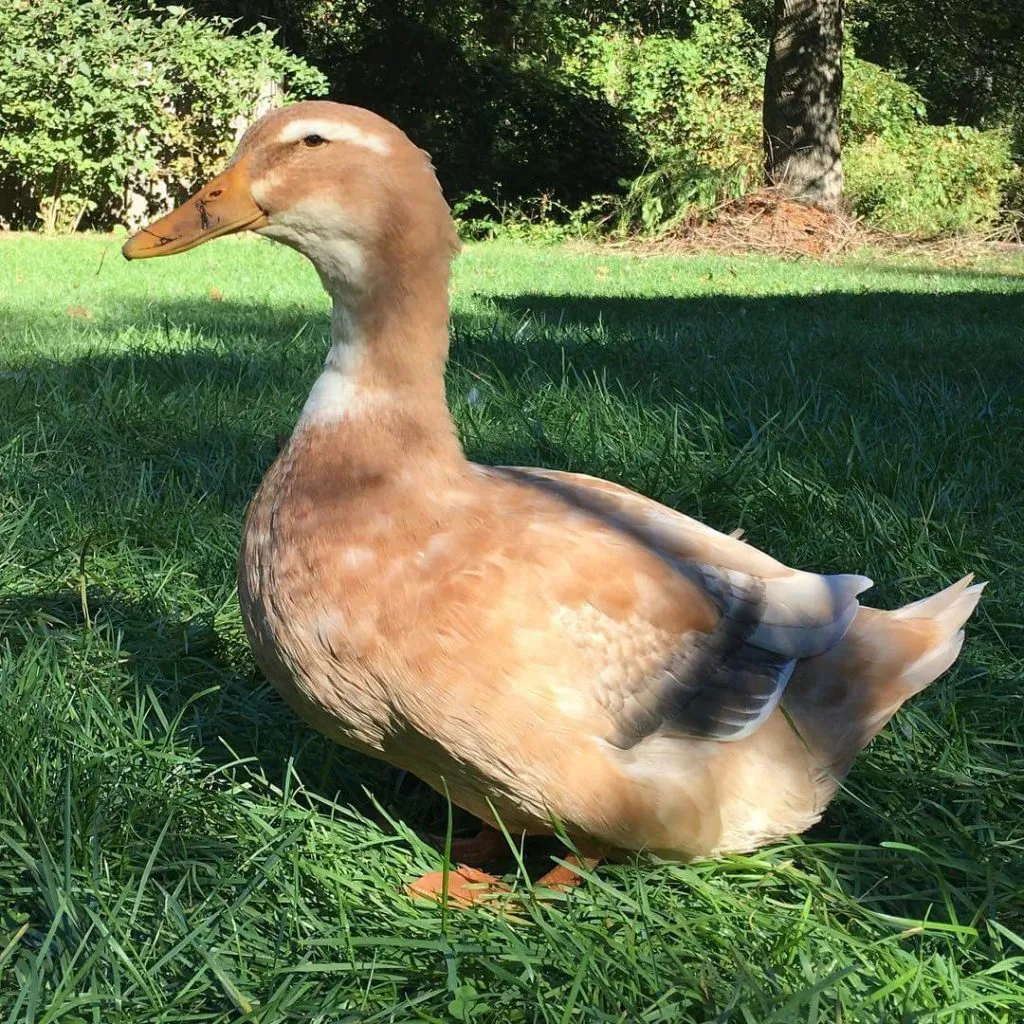
Saxony duck. Photo courtesy of Michaela Knott.
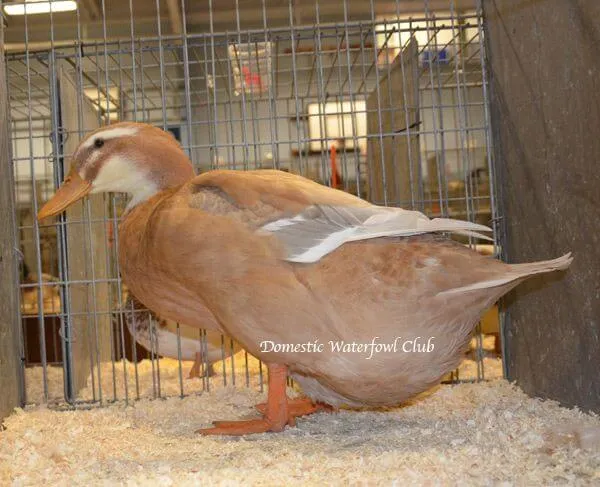
A female Saxony at a show. Photo used with permission from The Domestic Waterfowl Club of Great Britain.
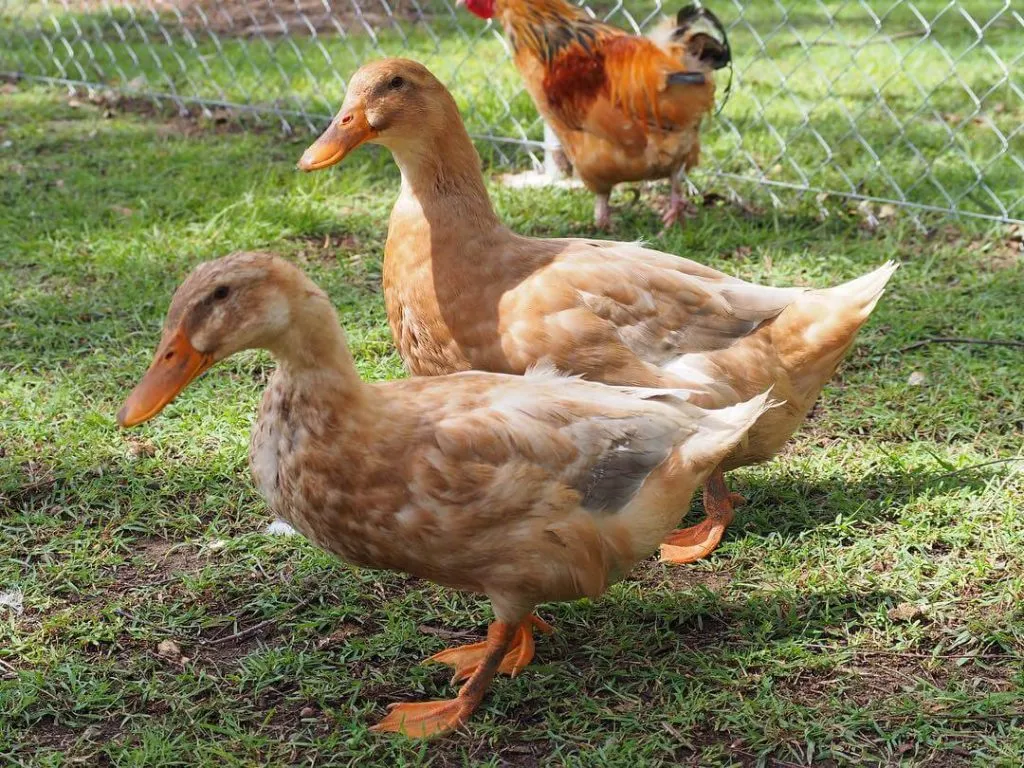
Two beautiful female Saxony ducks. Photo courtesy of Aimee Brown.
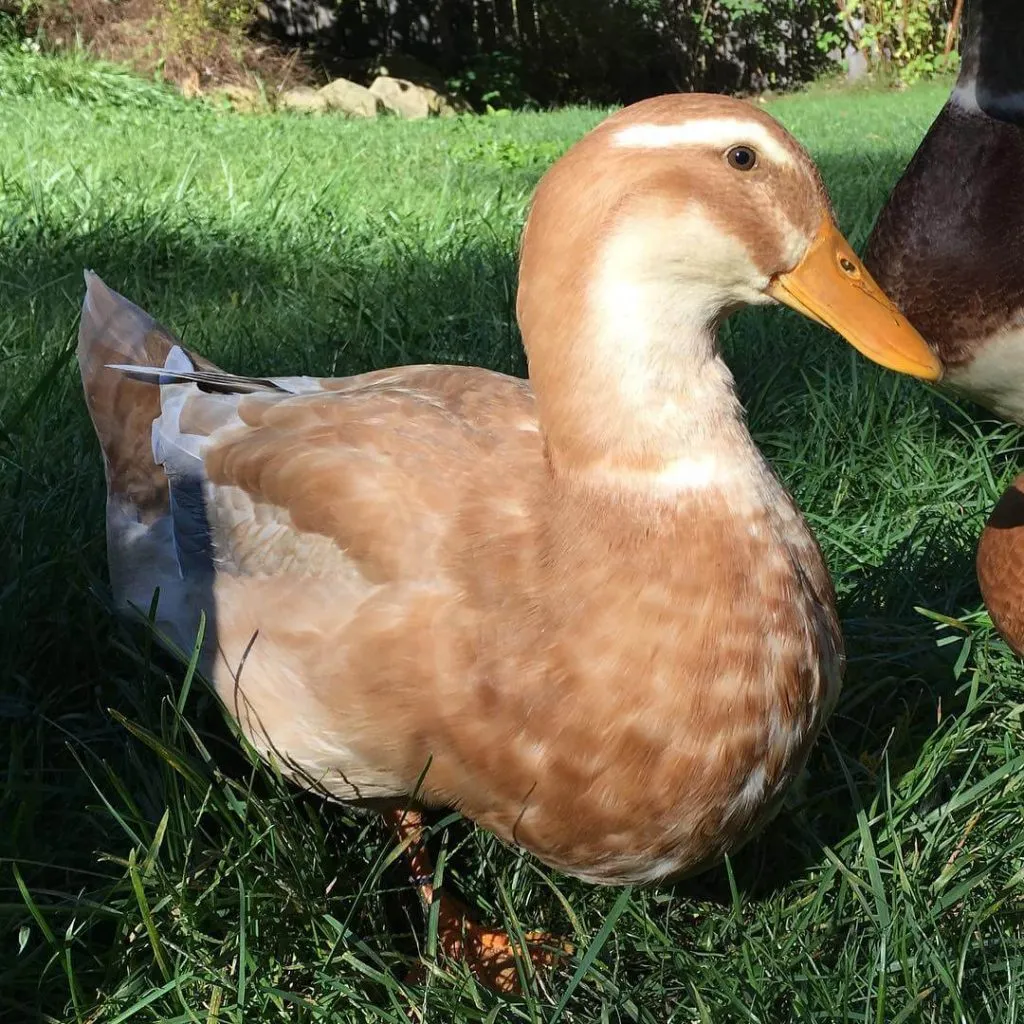
Saxony duck. Photo courtesy of Michaela Knott.
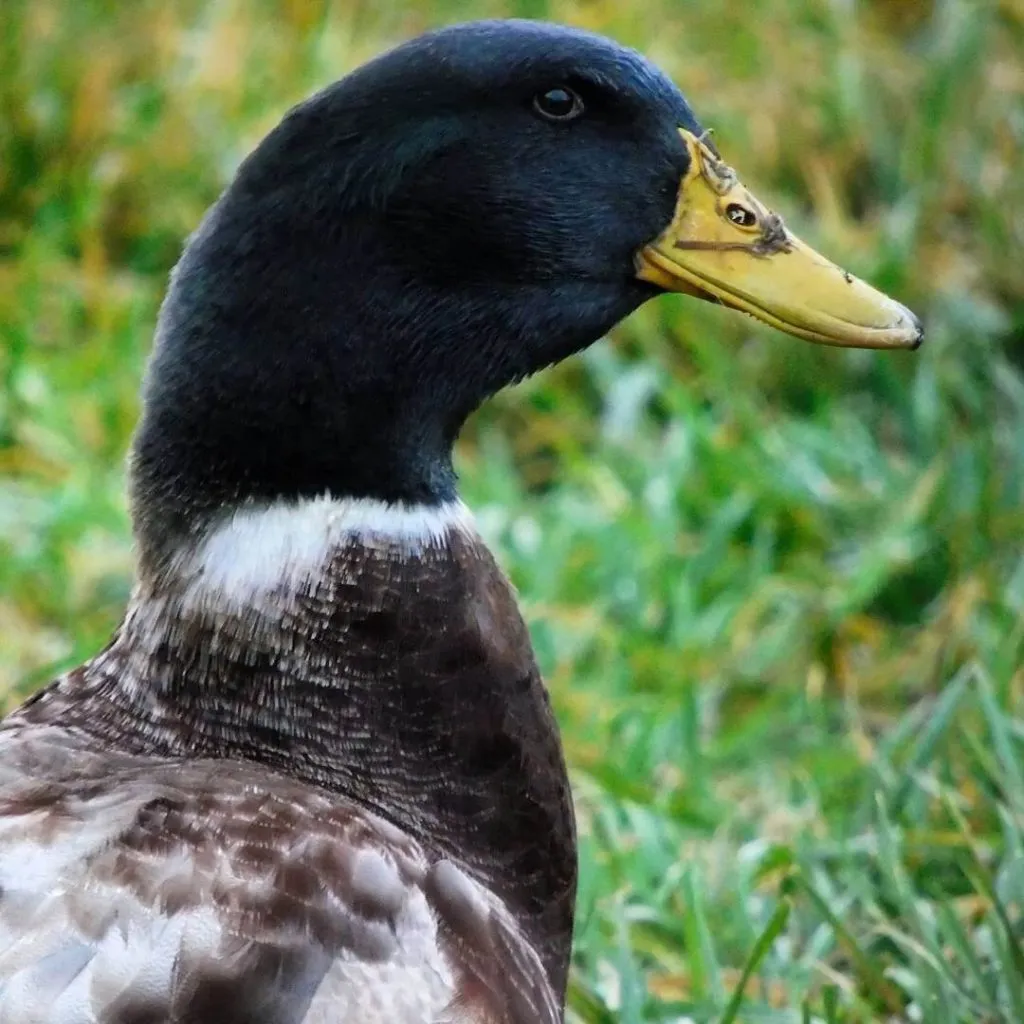
Head of a Saxony drake.
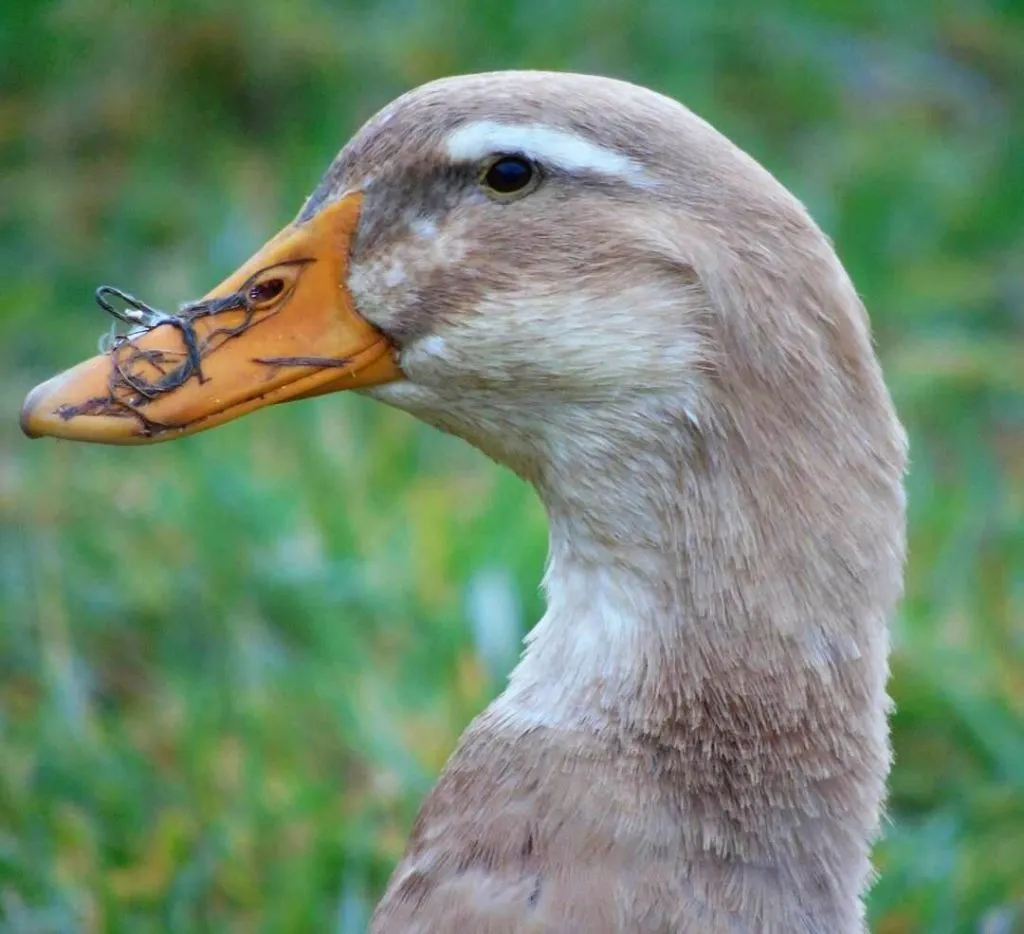
Head of a Saxony duck.
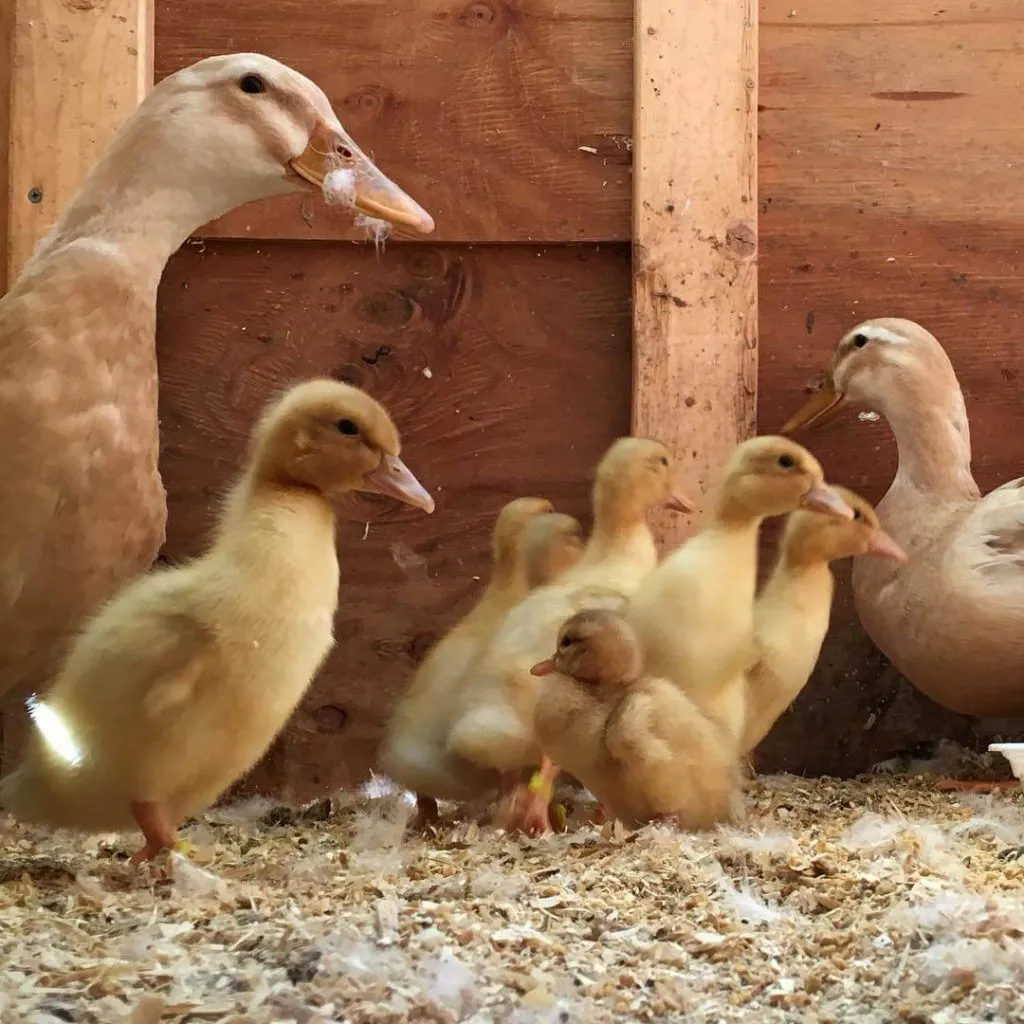
Two Saxony ducks and ducklings. Photo courtesy of Michaela Knott.
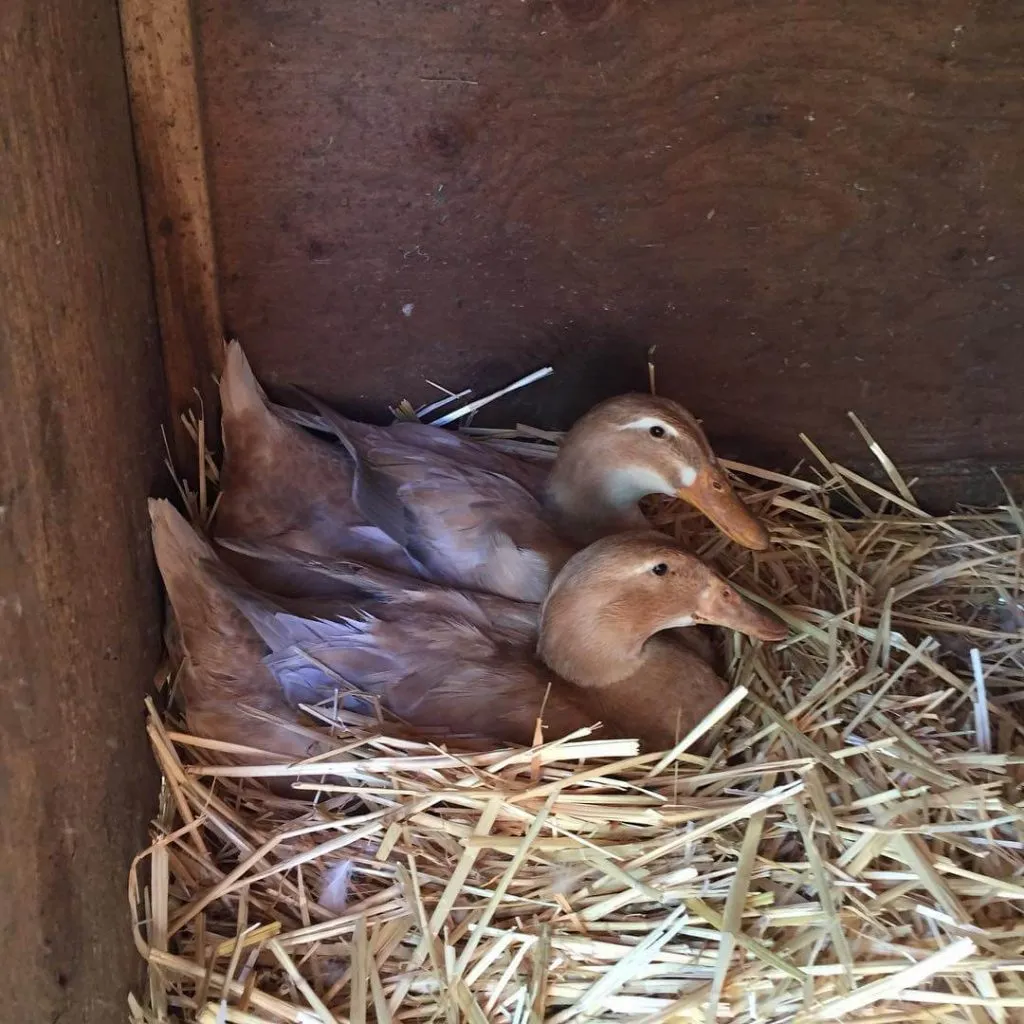
Two broody Saxonies coparenting.
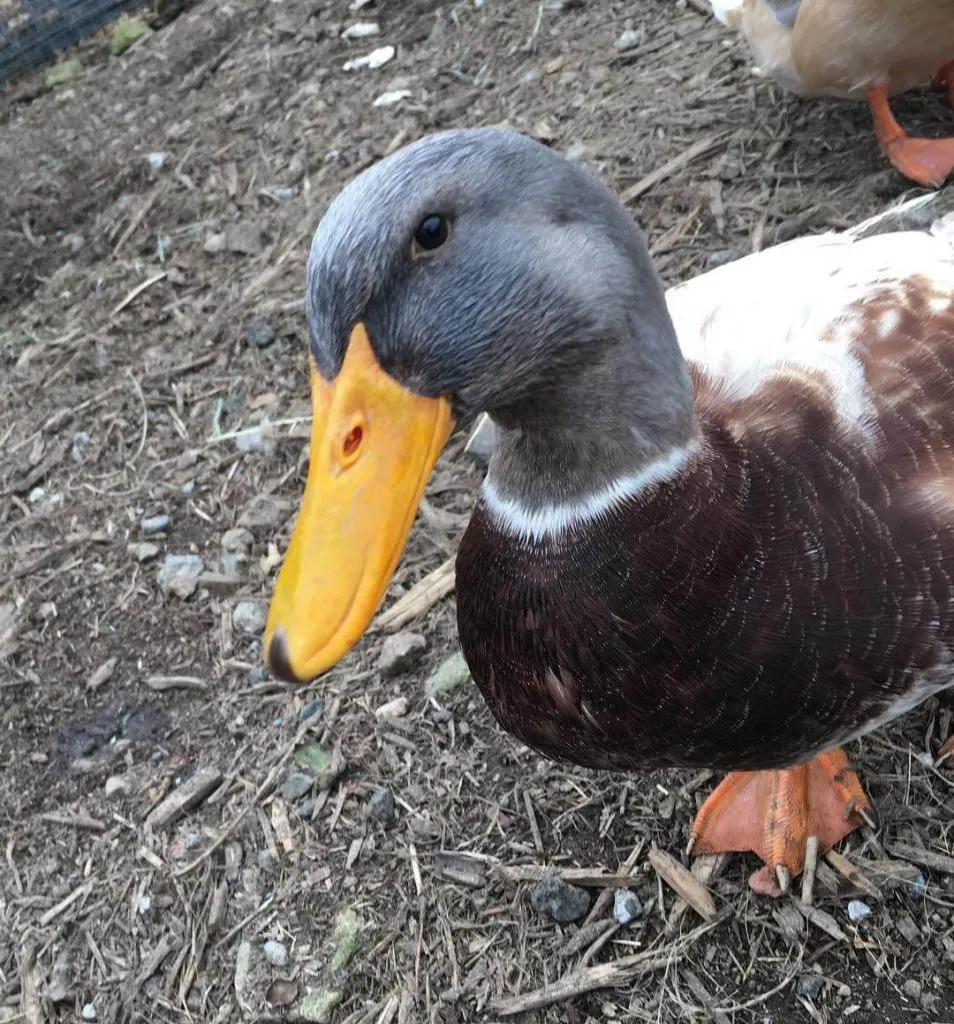
A handsome Saxony drake.
Leave a comment
Your email address will not be published.